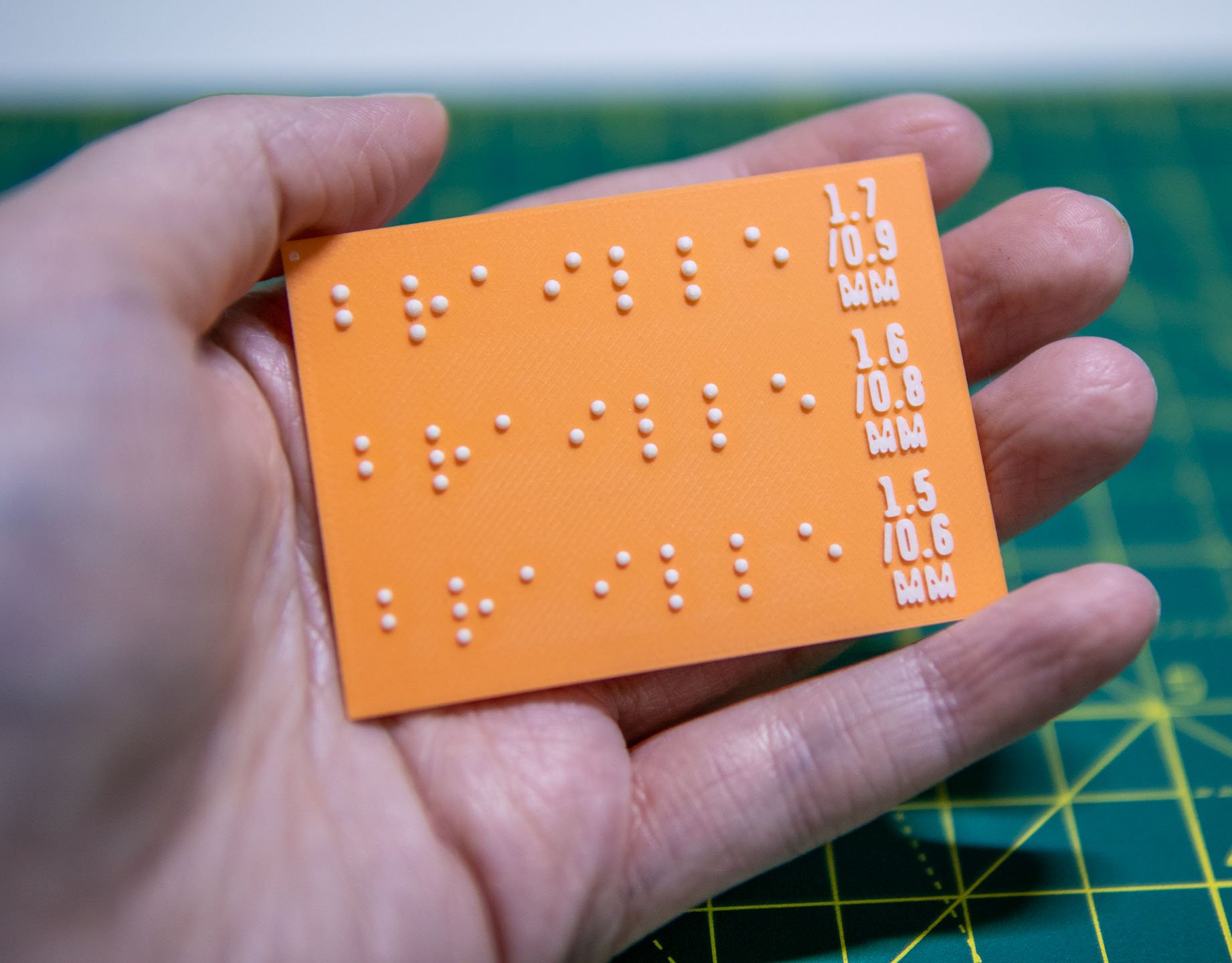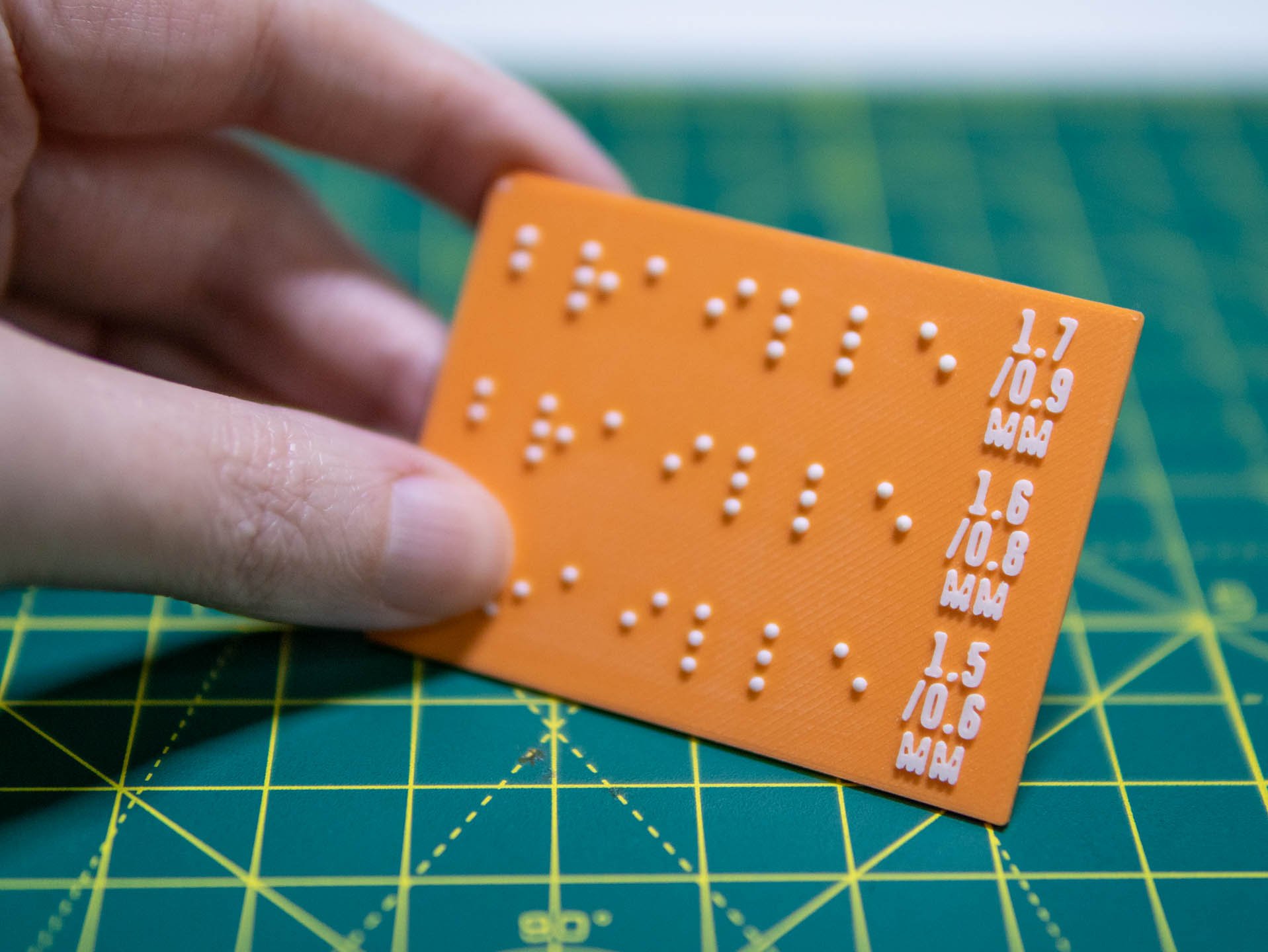
FUNCTIONAL DESIGNS FOR 3D PRINTING
In recent years, desktop 3D printers have become one of the most useful and important tools in my toolkit.
As both a maker and an inventor, having a rapid prototyping tool at my disposal has not just empowered my creativity, but shaped how I approach designs entirely. While I believe in utilising whichever method makes the most sense for each given use, objects that can be 3D printed have time and time again proven to be the most effective.
Designing for 3D printing has also enabled me to put the power of creation in other people’s hands as well, as I share the majority of my designs freely online.
Below are some examples of the many functional pieces I have designed for 3D printing. This page will continue to be updated regularly as I am continuously coming up with new designs.
Gender Neutral Bathroom Signs
While many of my designs are self propelled (nothing provides motivation quite like needing something yourself) I also enjoy doing commissioned pieces, like this set of gender neutral bathroom signs I created for London organisation Nesta.
They had a concept in mind that included a mirror, and wanted something that could be produced cheaply whilst still being robust and colourful. 3D printing immediately came to mind as an ideal form of manufacturing for this end result.
However, the signs also required braille that would meet the strict regulations for the tactile language.
FDM 3D printing isn’t known for it’s ultra high resolution or micrometre precision, but I enjoyed the challenge of finding a way of producing accurate results without expensive machinery.
The final piece features a small hand placed mirror, the bold company colours of orange and white (using Polymaker PolyTerra PLA filament), and regulation friendly braille. They now proudly grace the doors at Nesta headquarters in Central London.
Derwent Pastel Sharpener Holder
Sometimes simple designs are the most useful ones!
My pastel pencils that I use for portraiture are remarkably brittle and difficult to sharpen. After looking far and wide, I found that only this special Derwent Pastel sharpener would bring my pencils to a point without breaking them. However, they only came in this individual, somewhat exposed form.
Desiring to not make an enormous mess every time I sharpened my pastels anew, I designed this simple but satisfying holder for the Derwent Pastel sharpener, or indeed any small pencil sharpener of this design.
Everything fits together with a friction hold, and the cap can be easily pulled off to empty the contents when it’s full, or replace the sharpener when it gets dull.
The 3D printable model can be downloaded for free from Printables.com.
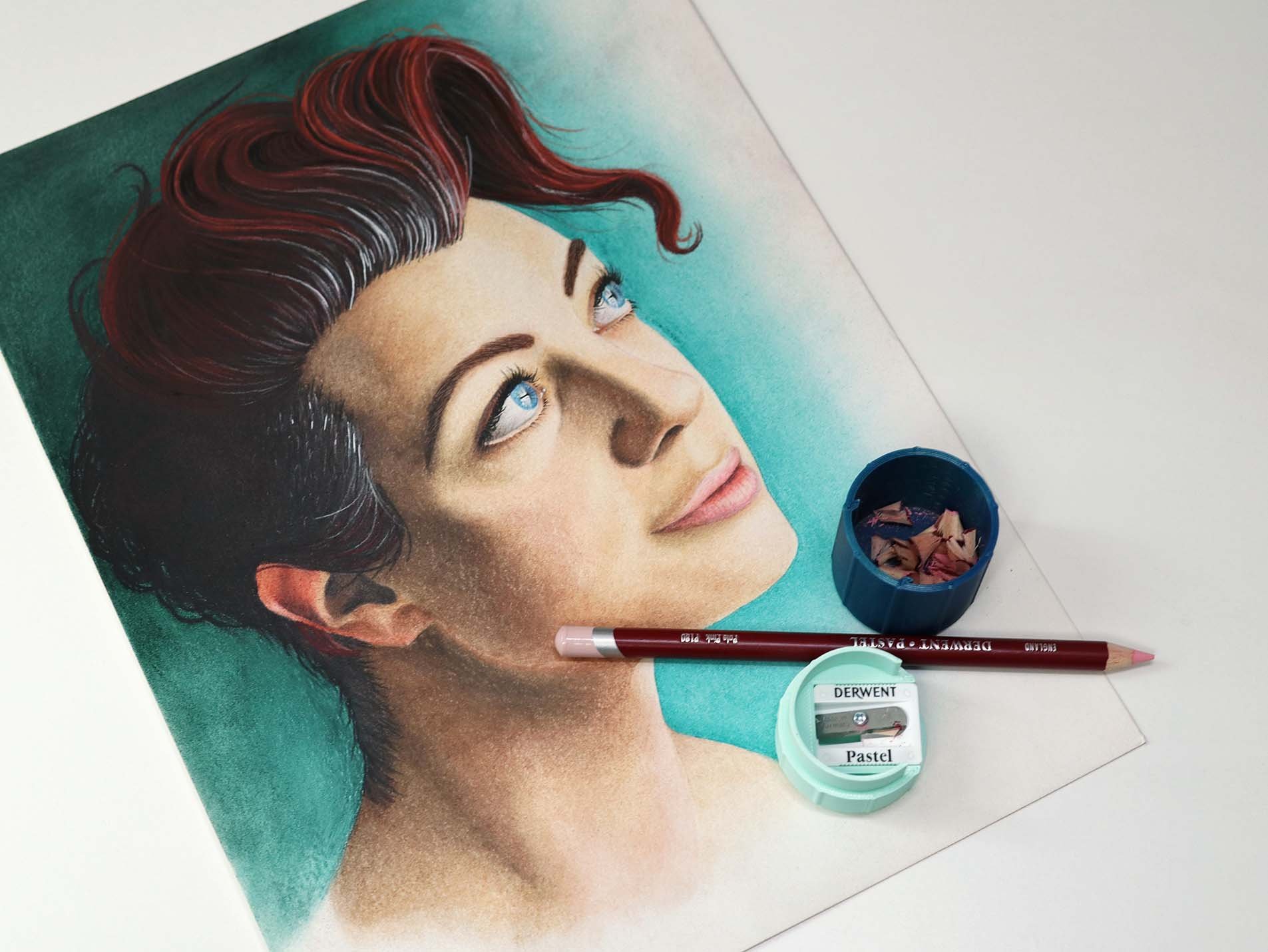



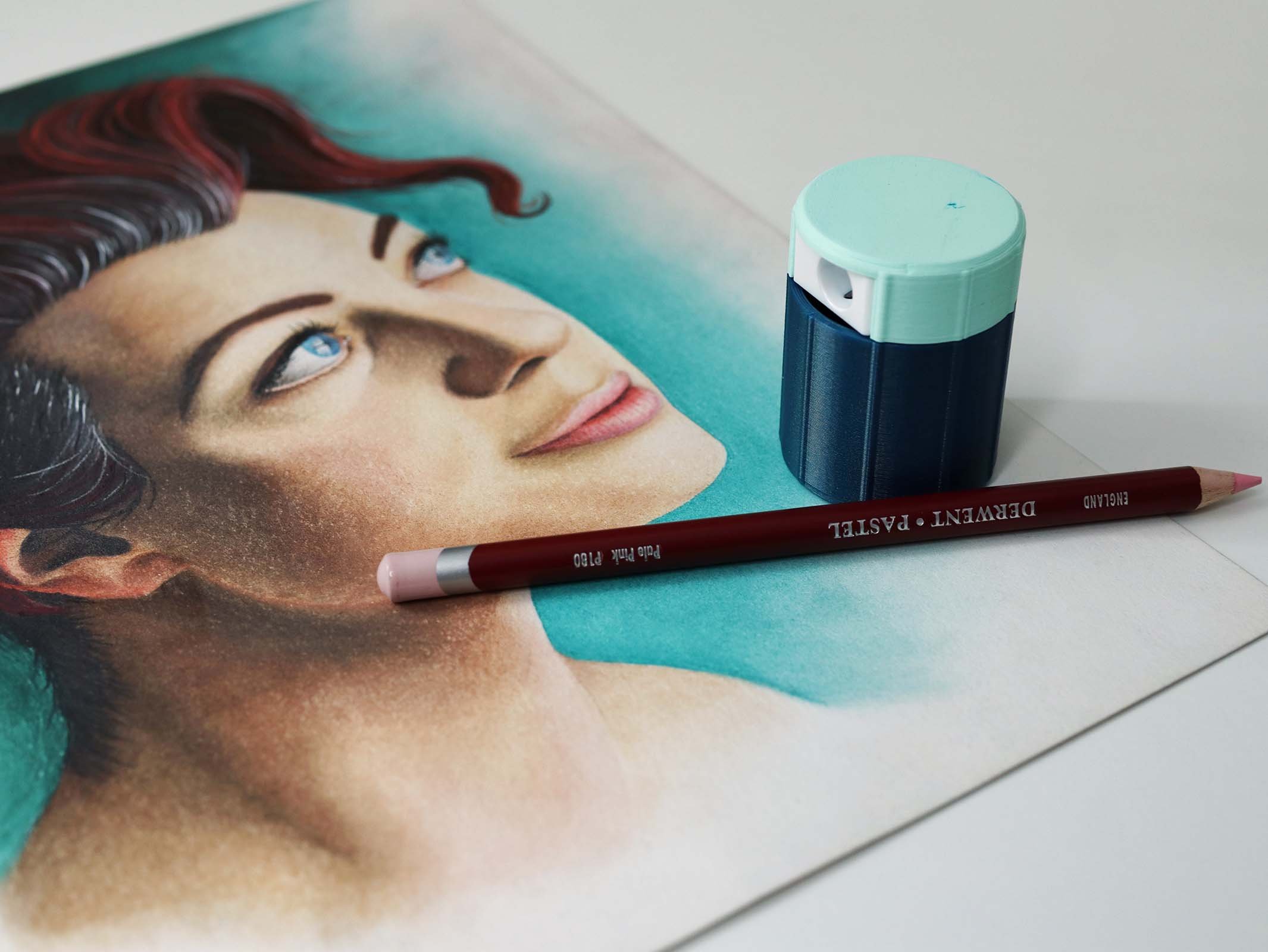

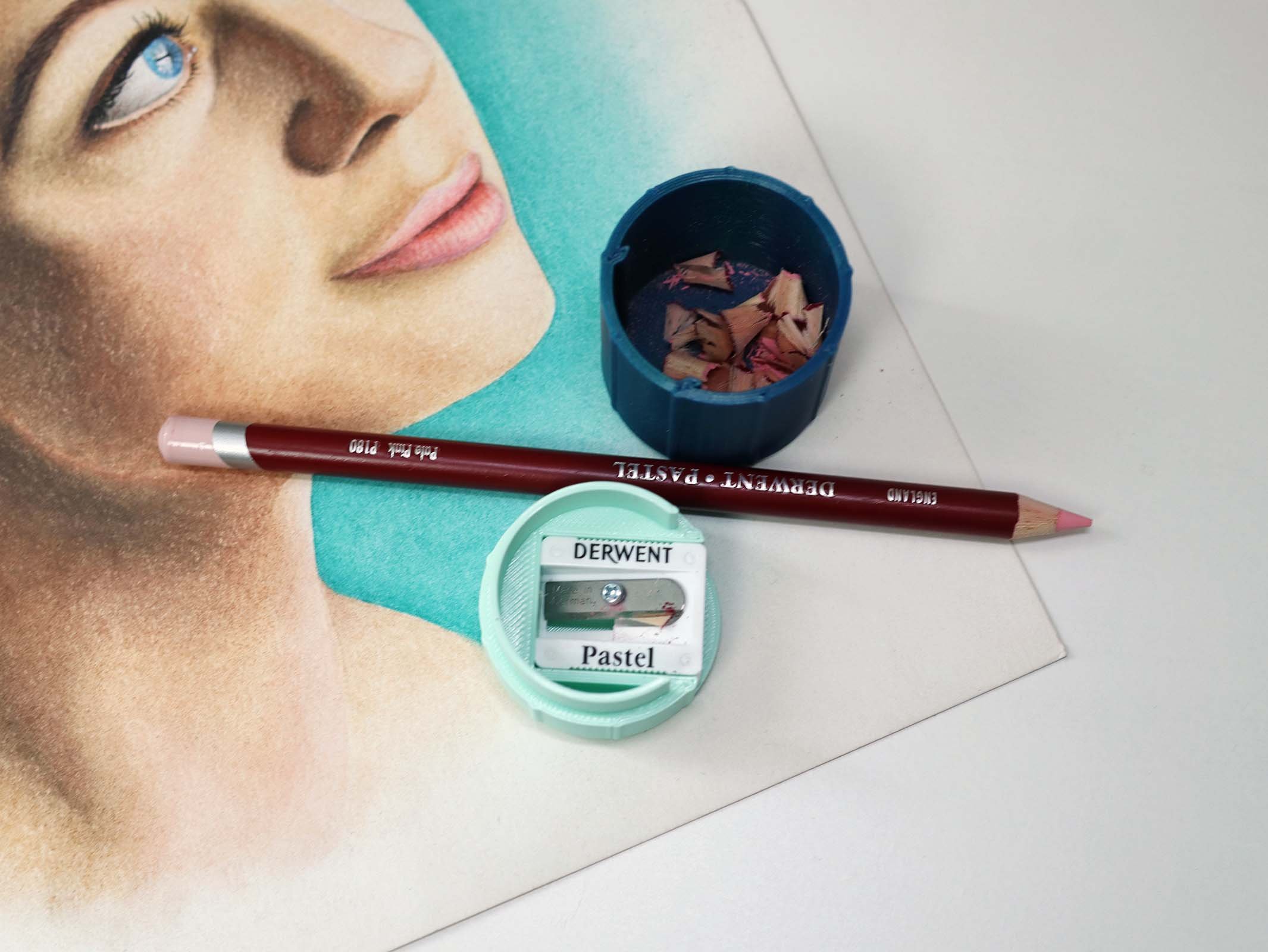

Tall Toothbrush Cup w/ Drip Tray
I found myself needing a new home for my toothbrushes and the space I had going spare was a bit skinny and without a ton of room for something low and wide. I designed this little toothbrush holder cup with a drain in the bottom and drip tray to sit below it to catch the excess moisture.
Far too many toothbrush holders I've owned have had designs that didn’t accommodate well for moisture and water over time, so why not make make a better one myself?
I designed it in multiple pieces both for ease of printing and to allow for easy multicolour prints. Everything fits together easily and can be taken apart for cleaning without a lot of fuss.
I love creating things that feel simple, yet are a huge quality of life improvement.
The 3D printable model can be downloaded for free from Printables.com.







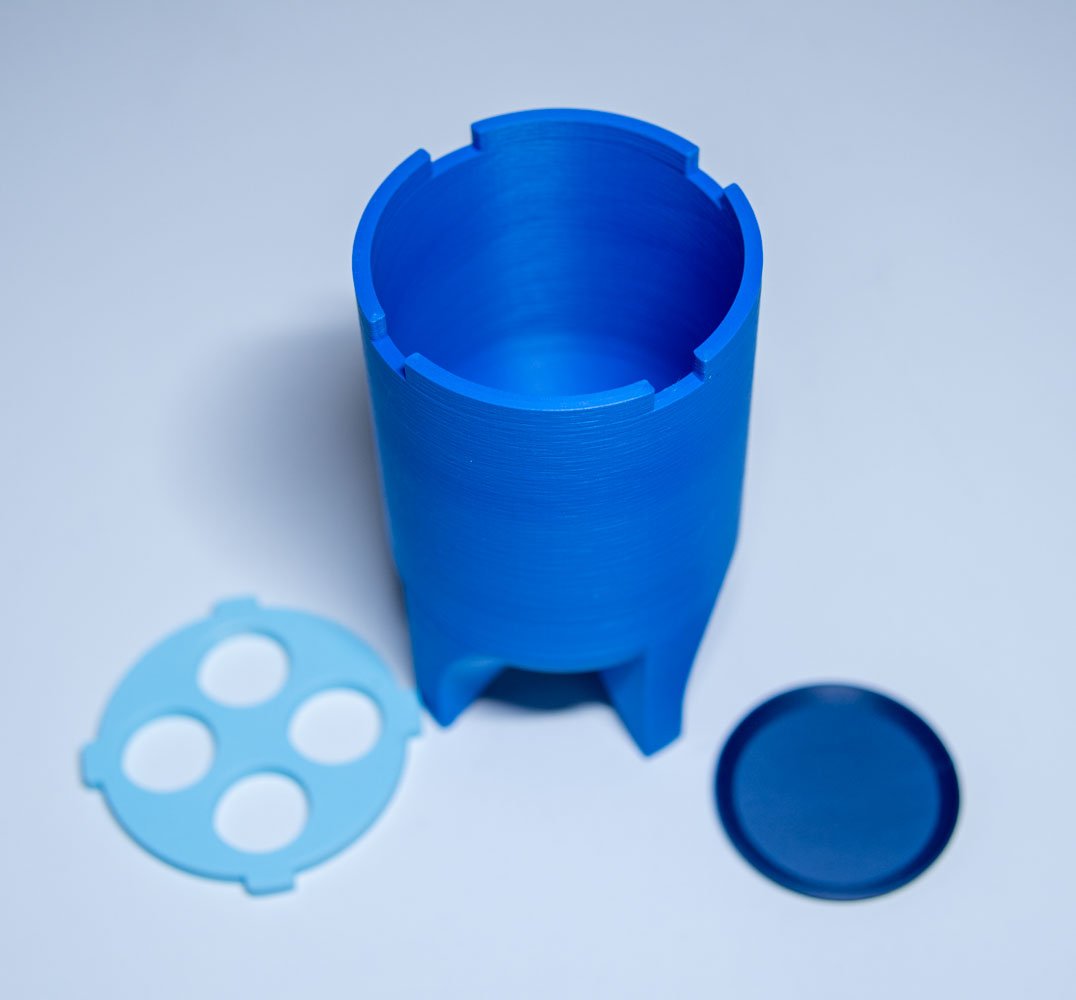


V6 Nozzle Box (with Skadis pegs)
I swear by my IKEA Skadis pegboards for organising my workspace.
When my 3D printing nozzle collection started to get a bit out of hand, and I didn’t want to lose the precious tiny pieces of metal, I thought it best to give them a safe space on the pegboard by my printers. I designed this angled nozzle box with threaded holes so I could securely house my nozzles (all of them) without worry of them falling out and getting lost.
It hangs nicely on the pegboard, but can easily be lifted off for when I need to change a nozzle (which is often).
Even though it is a small part of my workshop organization, it is easily one of my favourite functional pieces.
The 3D model can be downloaded for free from Printables.com, available both with number labels or without.
Mirror Holder (for Photography Light Tricks)
As someone who shoots film and photography in small spaces, I am frequently looking for new ways to create interesting shots.
Inspired by this YouTube video on using mirrors to fake sunlit windows, I designed this hinged case with removeable mounting pin to hold a variety of mirrors and allow me to mount them on tripods, magic arms, or wall plates. The mounting pin has threading for a 1/4th inch screw which is standard for photography equipment. The hinges are firm enough to keep the mirror safely in place while still allowing it to be swapped out when needed.
This design could easily be adapted to suit mirrors of other sizes and shapes as well, making it an ideal one to have in my catalogue just in case I need it!
The 3D model can be downloaded for free from Printables.com.
3D Printed Braille Calibration Card
Whilst developing the Gender Neutral Bathroom Signs I rapidly reached the realisation that braille is really not built for FDM 3D printing.
The regulations for readable braille are quite strict (though also vary from country to country) and in addition to being incredibly small, need a smooth round surface finish that desktop 3D printers are not exactly known for. Accessibility is incredibly important to me, so I took the creation of said braille seriously and created test prints until I was satisfied with the results.
The next thing I knew, I’d created a whole set of guidelines for 3D printing regulation friendly braille. And that is very much something worth sharing.
I ended out creating this calibration card and creating a video to teach people how to add braille to their own projects in a way that would give them an end result worthy of any ADA signage. I aimed to make the process as simple and straight-forward as possible, hopefully removing any barriers to entry when it comes to making it.
The 3D model can be downloaded for free from Printables.com.
Multi Material Name Cards
I have rarely been one to have the latest and greatest technology at all times, and much to my colour loving chagrin, I have never used an MMU, or Multi Material Unit for my 3D printers.
Whilst this is a disappointment of sorts, I’ve never let it stand in my way of designing and making colourful multi material 3D prints.
One of my favourite uses of this technique has been to create vibrant custom name cards and badges that are both multiple colours (more than just two!) and thin enough to create a living hinge and make them stand up on a flat surface. I created the name cards that you see here for guests to an autumnal dinner that I hosted.
These name cards would go on to inspire the development of my light up name badges as well.
Copic Marker Colouring Book Vase
I’m always hungry for any and all opportunities to test mixing mediums.
I’d long been curious about the ability to colour 3D prints with something other than acrylic paint, and so I designed a fun and fanciful vase to do this exploration with. I ended out titling it the Colouring Book Vase because I realised it felt an awful lot like a three dimensional colouring book page. It was a wonderfully relaxing piece to play with!
The tests were also extremely fruitful, and I was able to find the right combination of primer and top coat to allow for a beautiful, rich colouring of the PLA filament that I used.
This design would go on to inspire experimentation in the ceramics and mould making realms as well, the results of which will be later featured on another page of this website.
The model itself is exclusively available to my supporters through my Patreon and Ko-Fi pages.
Wall Mounted Hex Organiser
If you haven’t noticed a trend yet, I might have a thing for organisation.
My hunger for variety does tend to breed many large collections of things, from bottles of paint to piles of resistors to unwieldy collections of markers. Those markers in particular were challenging to house in a way that allowed me to access them but also kept them neat and tidy. Since wall space was more readily available than desk space, I designed this modular system that could climb up my wall as high as I needed it to.
While it was created with my Copic Markers in mind, I chose this hex shape both for it’s modularity and ability to hold a wider range of objects within it.
My markers fit perfectly, but other objects would fit easily as well. It has a range of shapes and styles, allowing someone to customise their arrangement depending on the space available and contents that need housing. There are holes for screw mountings, and inserts for magnets to help the pieces stay connected.
These 3D printable models can all be downloaded for free from Printables.com. Please note that these photos show the old logo, but all downloadables have been updated to the current logo.
Twisted Vase
There was once a point when 3D printing technology was still new to me, and I was curious to know it’s limits.
This vase was one of the very first designs I made explicitly for 3D printing to push how far it could go. I knew 3D printers were capable of a lot, but I also knew that they had limits. How well would it handle a design with constantly shifting surfaces, interspersed with regular spaces?
This design started life as a mental doodle, but in the end became one of my most popular 3D printing designs. It is even featured in one of 3D Printing Nerd’s videos.
